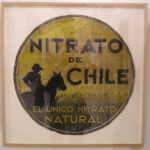
O nitrito é considerado um ingrediente de cura essencial responsável pela “fixação” das características de coloração assiciadas às carnes curadas, criando um perfil de sabor único que distingue dos produtos que não contém nitrito, promovendo um controle da oxidação lipídica e servindo como um eficiente antimicrobiano por si só ou em sinergia com outros ingredientes.
Nitrato de sódio, também considerado um ingrediente de cura, só é efetivo da mesma maneira que o nitrito caso seja primeiramente reduzido a nitrito de sódio. A redução pode ser realizada por bactérias naturalmente presente na carne ou pela adição de bactérias com atividade redutora. Embora menos utilizado atualmente, o nitrato de sódio ainda é incluído em produtos como embutidos curados por longo período, como presuntos crus, copas e salames, onde o período de longa maturação necessita de uma reserva longa de nitrito de sódio. Mais recentemente a redução de nitrato está sendo usada como um método de ação de cura indireta em curas “naturais” e “orgânicos” feitas para simular o processo convencional de cura..
.Remontando às origens da cura, o descobrimento do salitre(nitrato de potássio) talvez nunca seja conhecido mas é geralmente aceito com a contaminação acidental do sal usado com o único propósito de preservação da carne séculos atrás. Conforme a preservação e práticas da “fixação” da coloração vermelha e sabor únicos aumentou, o tratamento da carne com sal, salitre e defumação foram tornando-se o padrão. Mais tarde, no século 19 e início do século 20, descobertas sobre a cura da carne foram realizadas pelos cientistas pioneiros Polenske, J. Haldane, K. Kisskalt, R. Hoagland, and K. B. Lehman. Estes cientistas foram capazes de criar os entendimentos fundamentais dos ingredientes de cura e que o nitrito, e não o nitrato, era o responsável por curar as carnes.

A descoberta do nitrato e nitrito maximizou os benefícios únicos destes aditivos oferecendo controle para níveis adequados de adição às carnes vermelhas e de aves. Antes descoberta dos componentes de cura as carnes eram condimentados e curados excessivamente por motivos de preservação, técnica que foi lentamente sendo refinada para atingir mais aos anseios dos consumidores por produtos com o sabor da carne mais pronunciado. Ao adicionar menos sal e outros métodos de conservação, que foi possível pela introdução do nitrito e nitrato, os produtos carneos curados foram passando da baixa qualidade e durabilidade para uma melhor qualidade e vida útil mais longa. Conforme o processo de cura evoluiu, ele mudou de uma arte imprecisa para uma ciência sofisticada. Décadas de pesquisas foram realizadas para melhor compreensão da qualidade e segurança das observações feitas séculos atrás. Por conta da complexidade da cura e das reações relacionadas ao processo de cura, as pesquisas continuam até os dias atuais. O nitrito ainda é considerado fascinante, único, insubstituível e um ingrediente não compreendido completamente.
Para entender melhor o uso do sal de cura, leia Sal de cura, o que é e quanto usar
Fonte: https://pdfs.semanticscholar.org/8873/f13b3813e748008bdf3470d8acb81eb6c67a.pdf




O nitrito e o nitrato podem causar câncer?
Oi José, o nitrito e nitrato em si não, mas sim as nitrosaminas que podem ser formadas posteriormente ao consumo. Mas a maior fonte de nitrato na dieta provém, de longe, de vegetais. Para se ter uma comparação, o nitrito residual permitido em um produto cárneo processado no Brasil é de 150ppm, enquanto o espinafre orgânico tem mais de 1300 ppm de nitrato naturalmente presente. Dê uma lida nos posts abaixo:
https://charcutaria.org/aditivos-alimentares/carnes-processadas-sal-de-cura-nitrito-nitrato-e-cancer/
https://charcutaria.org/aditivos-alimentares/tempo-de-conversao-do-nitrito-nas-carnes-curadas/
Ambos nao sao cancerigenos